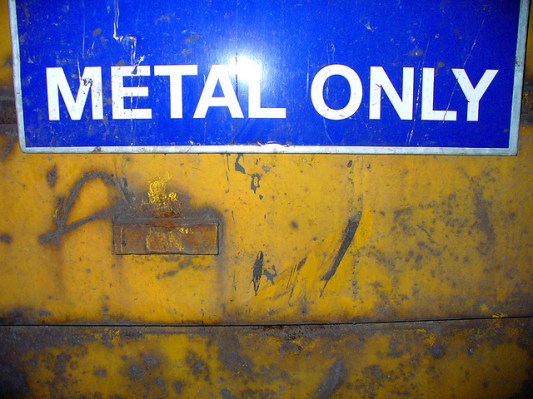Canonical, the corporate sponsor of the Ubuntu Linux distribution, has been doing a lot of interesting development work across a number of different computing segments: their on-going work with the Unity interface for Ubuntu, Ubuntu TV, Ubuntu for Android, and a whole lot more. Ubuntu, according to Canonical, is the world’s most popular OS for public, private, and hybrid clouds. Not content with being a tenant, Canonical is pushing to make Ubuntu the number one OS for running clouds, too. Similarly uncontent with existing descriptors like Platform-as-a-Service (Paas) and Infrastructure-as-a-Service (Iaas), Canonical is announcing their own Metal-as-a-Service (MaaS).
When I first heard the term “Metal as a Service”, I admit that I immediately envisioned Ubuntu’s Jono Bacon distributing heavy metal free software songs. MaaS is, in fact, a new server orchestration solution cooked up by Canonical.
The basic idea is that hardware is increasingly a commodity that you buy for what it offers, not what it is. In a cloud environment, you don’t really care too much about the technical details of your CPUs, or bus speeds, or memory channels. You want computational power, and storage, and networking. According to Canonical, MaaS is a way to abstract all the details of the physical computers into what you really care about.
According to Matt Ravell, Canonical’s MaaS Product Manager, MaaS represents a layer underneath Infrastructure-as-a-Service. The idea is that you use MaaS to orchestrate your hardware, and then you use Juju to orchestrate your applications and workloads. Conceivably, you can use MaaS + Juju to deploy something like OpenStack or Cloud Foundry much faster than if you were manually deploying those instances.
MaaS is available with the beta release of Ubuntu 12.04 LTS. I asked Ravell, and Dave Walker, Canonical’s Cloud Engineering Manager, how mature MaaS was, since it was going into a long-term release of Ubuntu. Both men quickly assured me it was LTS-qualified, even if it doesn’t currently have all the features they’d like it to have. Walker told me that Canonical has been thinking about the problems of provisioning and orchestration since at least 2008, and have made a number of tepid attempts to solve them; but those attempts “didn’t tell a strong enough story” and “felt kind of klunky.”
The long-term roadmap for MaaS includes a number of interesting features, like ensuring that the BIOS or RAID controller firmware is patched to your standard, integration with existing authentication and authorization services, performing burn-in tests on newly deployed hardware, and more. Right now, MaaS looks best suited for greenfield cloud deployments.
Ubuntu founder Mark Shuttleworth blogged about MaaS today. He paints a very interesting picture. To me, though, MaaS feels like a solution looking for a problem. There are many provisioning solutions in the open source community (to say nothing of the proprietary world!), and many talented and clever people are working to address provisioning –physical and otherwise — in a variety of ways. MaaS sounds, to me, like Canonical is suffering from not invented here syndrome. Ravell told me that MaaS is using aspects of cobbler, for example, but insists that MaaS is something brand new.
My gut reaction is that if Canonical feels that deploying OpenStack or similar solutions is currently too complicated, they’d do everyone a favor by working to directly improve those processes, rather than develop yet another abstraction layer to script the installation of complicated workloads. I understand Shuttleworth’s desire to make physical nodes easily managed, but in my experience that only benefits specific data center designs. Existing enterprises already have physical server provisioning and management solutions, and MaaS will likely face an uphill battle with those shops.
As skeptical as I am about MaaS, I am glad to see the bright folks at Canonical thinking beyond the “cloud” fixation that seems to dominate today. Time will tell whether MaaS gains the traction necessary to succeed.
photo credit: Metal Only by _gee_
